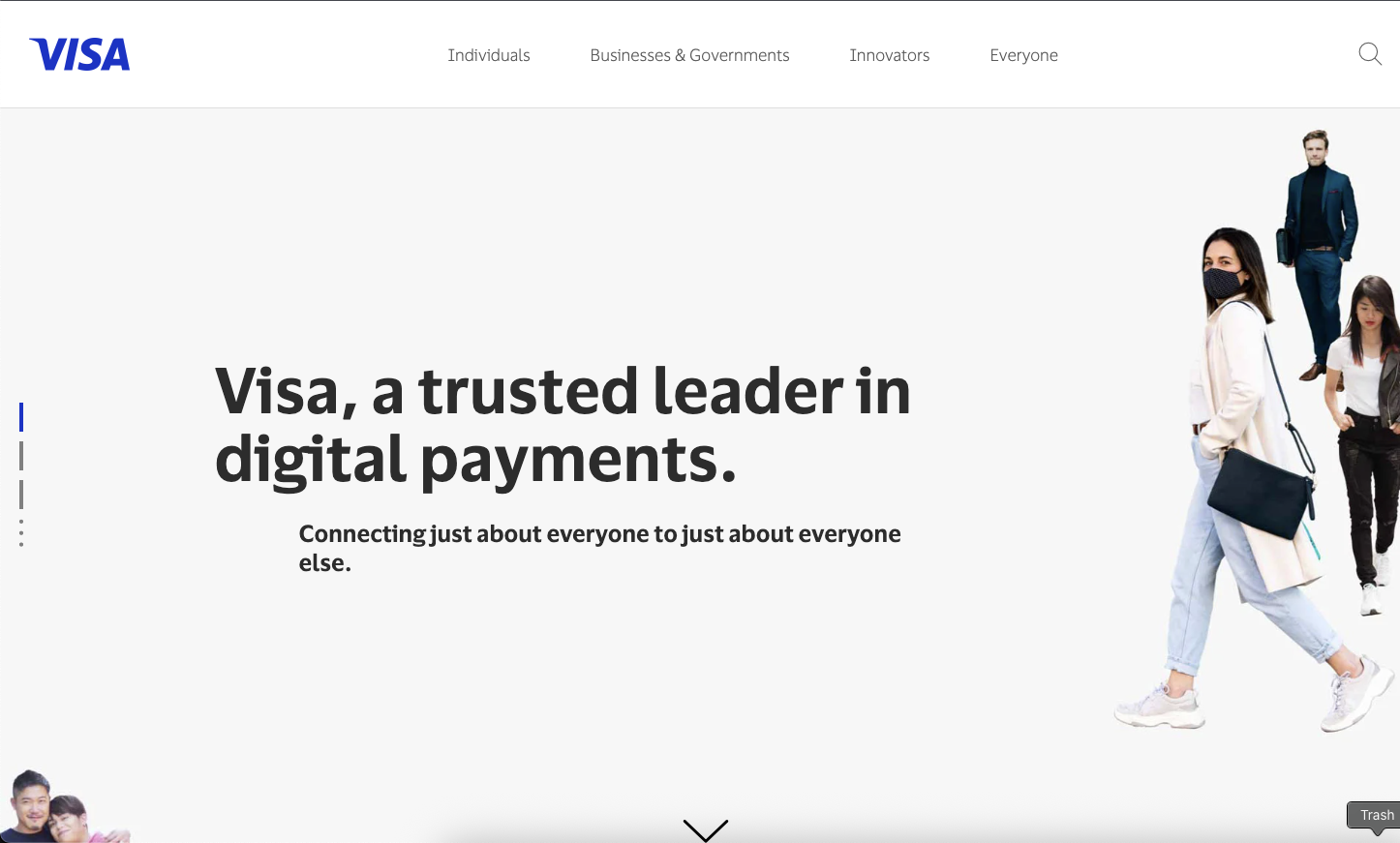
Visa exists to reinvent the way the world pays and is paid, connecting billions of people, devices, and businesses into a secure, frictionless digital economy. We envision a future where payments are effortless, universal, and accessible to everyone, everywhere, empowering economic opportunity and inclusion on a global scale.
Harnessing the power of advanced technology, including VisaNet—the pioneering electronic payment authorization and settlement network—we create an ecosystem that enables seamless, trustworthy transactions across countless devices and platforms. Our work drives innovation and partnership that expand the boundaries of what's possible in global commerce.
At our core, we are committed to building a world where money moves as fast and freely as ideas, fueling prosperity by connecting consumers, merchants, financial institutions, and governments in a vibrant, inclusive digital marketplace shaped by trust and progress.
Our Review
We've been tracking Visa for years, and honestly, it's one of those companies that's so embedded in daily life that we sometimes forget how remarkable their reach actually is. Every time you tap your card at a coffee shop or buy something online, there's a good chance Visa's network is quietly making it happen behind the scenes.
What struck us most during our research wasn't just their massive scale — though processing payments in 200+ countries is genuinely impressive. It's how they've managed to stay relevant and innovative despite being built on 1950s foundations.
The Network Effect That Actually Works
Visa's secret sauce isn't really secret at all: they've created the digital equivalent of roads and highways for money. Their VisaNet system processes transactions with the kind of reliability that makes other tech companies jealous. We're talking about a network that handles billions of transactions without most people ever thinking about it.
The company's evolution from BankAmericard to a global payments giant shows they understand timing. They went international in 1974, introduced debit cards in 1975, and rebranded with that universally recognizable "Visa" name in 1976. Smart moves that positioned them perfectly for the digital age.
More Than Just Cards These Days
While Visa started with plastic cards, we're impressed by how they've adapted to smartphones, tablets, and whatever payment method comes next. They're not just processing your credit card swipe anymore — they're enabling the entire digital commerce ecosystem.
Their 2008 IPO timing was particularly clever, raising nearly $18 billion right as digital payments were about to explode. Today, they're essentially the infrastructure that powers modern commerce, which gives them incredible staying power.
Who Benefits Most
Visa works for almost everyone, which is both their strength and their business model. Whether you're a corner store owner, a multinational corporation, or just someone buying lunch, you're likely using their network. For job seekers, they offer everything from tech roles to business development, with a company culture that seems genuinely focused on growth and innovation.
The bottom line? Visa has built something that's become genuinely indispensable to modern life. That's not easy to do, and it's even harder to maintain for decades. They've managed both.
Consumer credit, debit, prepaid, and commercial cards
Electronic payment processing through VisaNet
Secure and reliable transactions across multiple devices
Global payment solutions supporting consumers, businesses, and governments








